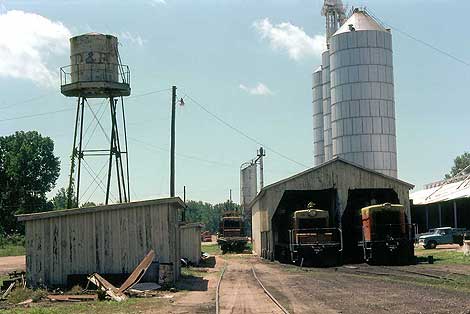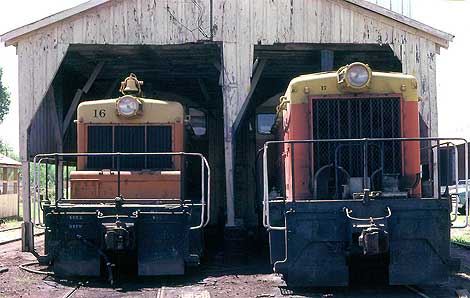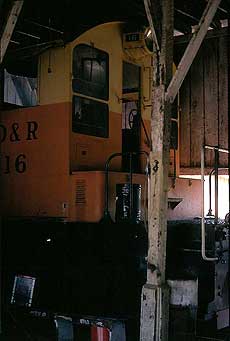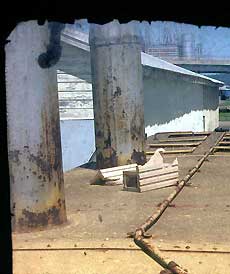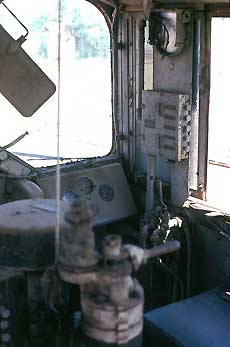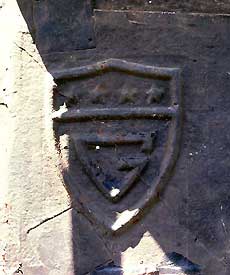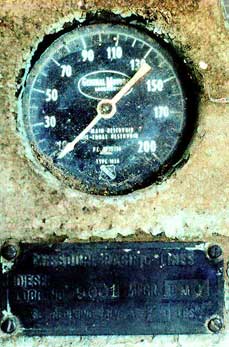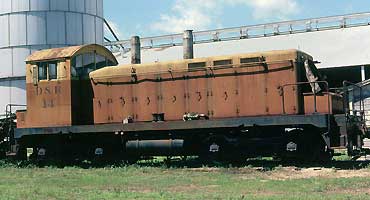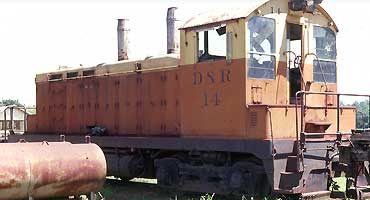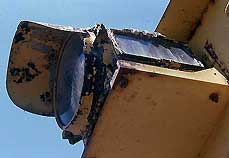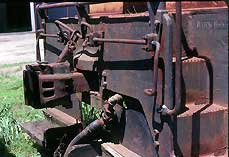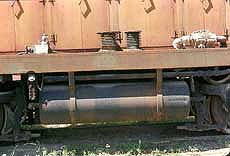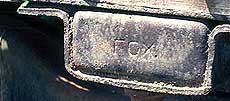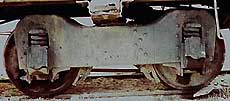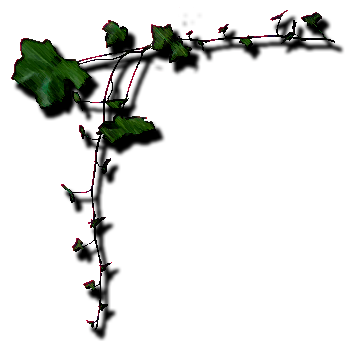
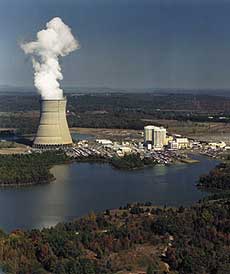
What the Brochures Don't Say:
The night before our D&R visit, we camped at Lake Dardanelle - due to a glowing recommendation in local tourist literature - arriving after dark. In the morning, the first words out of anyone's mouth were Hey, what's with all of the steam? Adjusting our vantage point, we realized that we had pitched our tent just across the lake from a nuclear power plant. This was not our idea of bucolic splendor, but it did explain the two-headed fish that we found washed up on the beach amongst an unusually large number of Pepsi cans.
mmn#14; EMC SC, sn. 711, blt. 7-37; ex MP 9001, now at Illinois Railway Museum
mmml#16; EMD SW1, sn. 1474, blt. 1-42; ex MP 6001, ex ex CEI 99; on D&R, 2006
mmml#17; EMD SW7, sn. 10526, blt. 6-50; ex Chicago Heights Terminal Transfer 132 (CEI
mmmmmmsubsidiary), 1208 (MP subsidiary); to Ouachita 17, retired by 2002, scrapped?
#14 as an identification guide
In its early days, Electro-Motive offered its Winton engine-powered switchers with either welded (fabricated) or cast frames. From a distance, the difference is hard to spot, but close-up inspection reveals a General Steel Casting Corporation logo (right) near the step wells and a significantly heavier-looking frame (see photo, next section) on the cast frame versions .
D&R's SC (S=600 hp; C=cast) can be distinguished from an otherwise nearly identical model SW (W=welded) by these two features. The same goes for the N-series (N=900 hp). But if you want to know if it's an NC, NC1 or NC 2 (likewise NW, NW1, NW1a), you'll probably need to look-up its serial number, because the differences were mainly electrical. Another spotting diffugalty arises from the fact that some of the early N-series locos had electrical boxes similar to the SC/SW on their front platforms, while others did not. Also, both series had two exhaust stacks; whereas the 567-powered SW1 only had one.
Now, how do you know that your particular locomotive contains a genuine Winton 201-A: you can't crowbar open rust-encrusted doors on a photograph, eh? Most 201-A's were changed-out for 567's before they went to the scrap yards, but not all of these conversions produced bizarre hood arrangements such as Rock Island's, so the only reasonably dependable IDing method is to note the position of the engine's exhaust stacks - the Winton's were offset (above left photo).
Further identification of #14: the loco's provenance was easy to figure out, courtesy of Missouri Pacific, which helpfully affixed an ID plate (right; please keep the comments re our Photoshop acumen to yourself) to the engineer's instrument panel (left) - it formerly was the MOP's 9001.
further visual intelligence on #14
Foxes in the wild
While puns are common around Wx4, pics of Fox trucks are not: these two D&R flats are the only equipment with these trucks that we have ever encountered au naturale (i.e., not on a museum/tourist line).
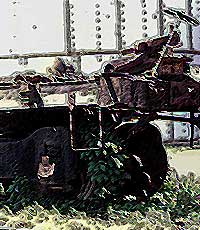

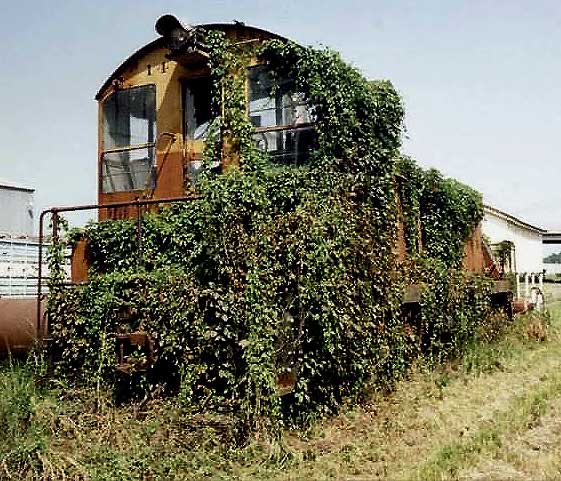
| Kind reader Mike Sypult of Rogers, Arkansasrecently sent Wx4 an update on things D&R. Mike wears two hats. He edits the Arkansas Scrambler, the house organ of the The Arkansas-Boston Mountains Chapter National Railway Historical Society, and moderates the Arkansas Railroad History page on Facebook. Thanks, Mike! First is a (sad) update on the Fox trucks equipped flatcar (see below photos): Around 1982 or so, this car was purchased by the Eureka Springs & North Arkansas and shipped to Eureka Springs. It was used as a prop during the filming of the 1982 television mini-series The Blue and the Gray. As I recall, they were stenciled USMR as in Civil War times. In 2006, I found the flat car over in the weeds decaying away. The trucks may still be there, but the car is toast. The second update is more comforting to D&S (and MP) aficionados. It is snugly tucked away inside the Illinois Railway Museum engine house. |
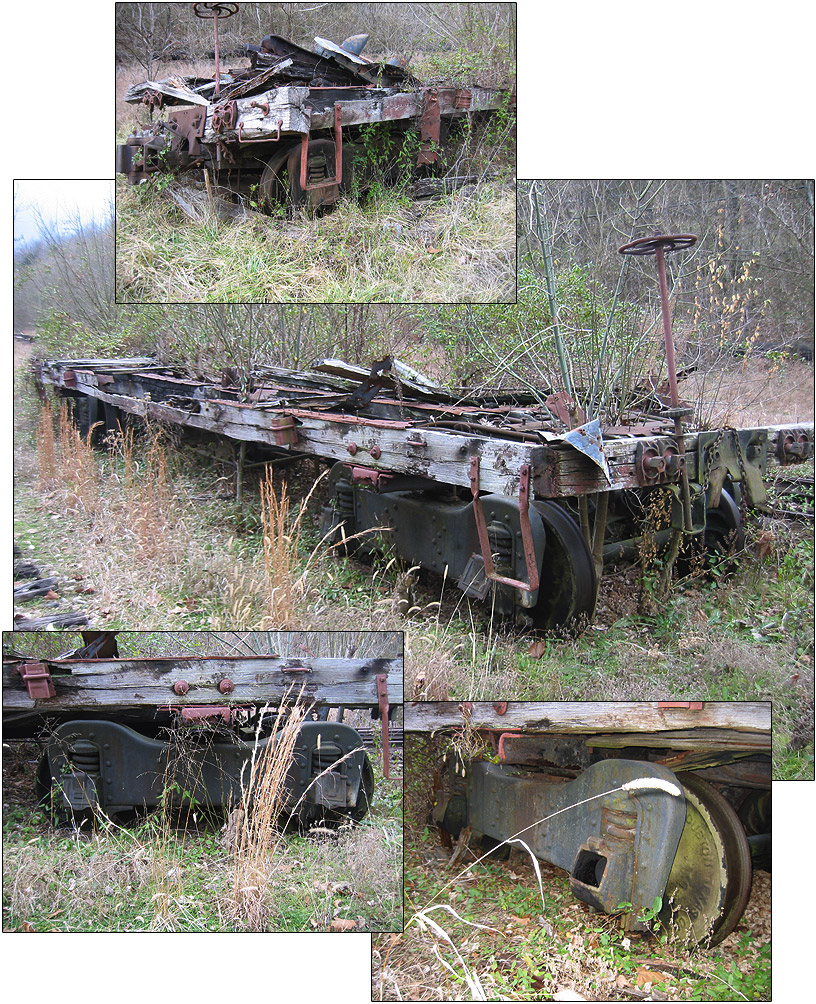
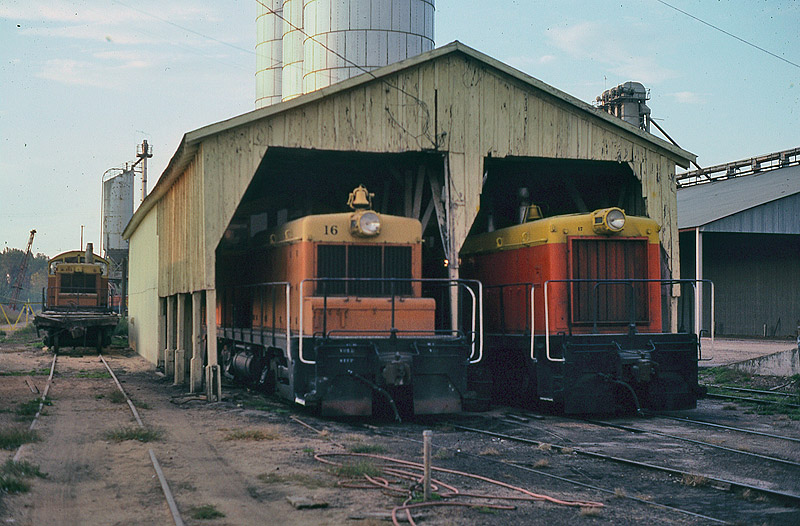
Four years after Wx4's visit, Charles Lamphere found an identical scene. Wx4 collection
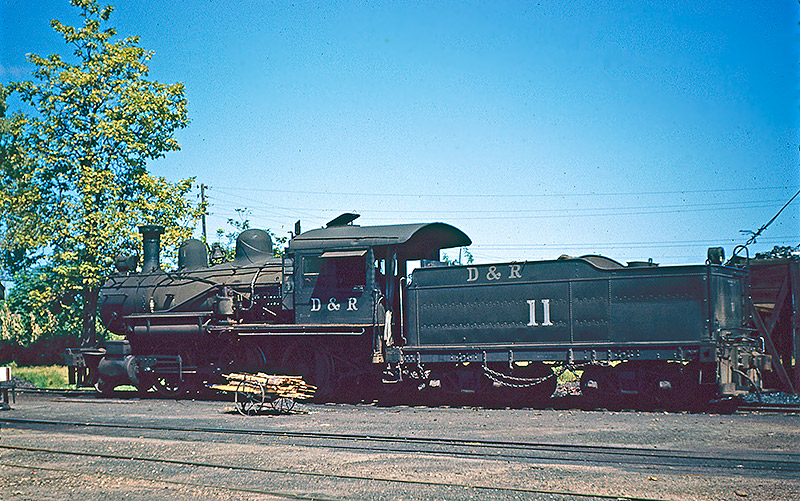
Color photos of D&R in steam days are exceeedingly rare, we figure. Here's a Kodachrome by C.H. Roy of 2-6-0 #11 circa 1950, likely still in active use.She was constructed as M-K-T #444 (subsequently renumbered 402, 931, 1205), later sold to Rockdale and Southern (#4),then D&R, which scrapped her in 1955. Wx4 collection
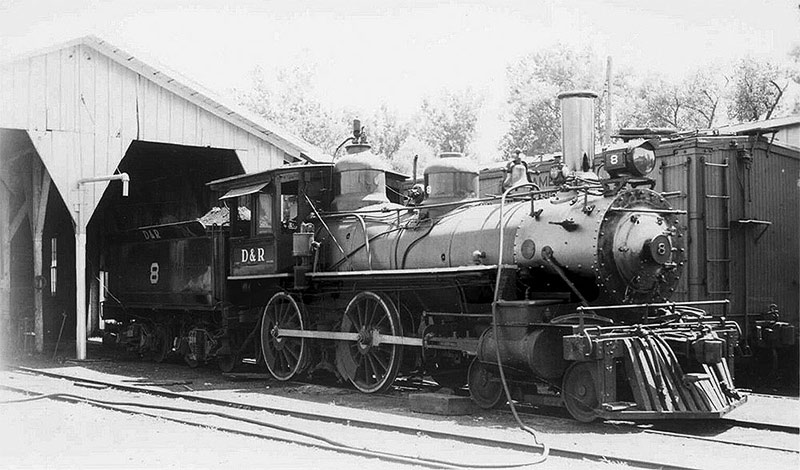
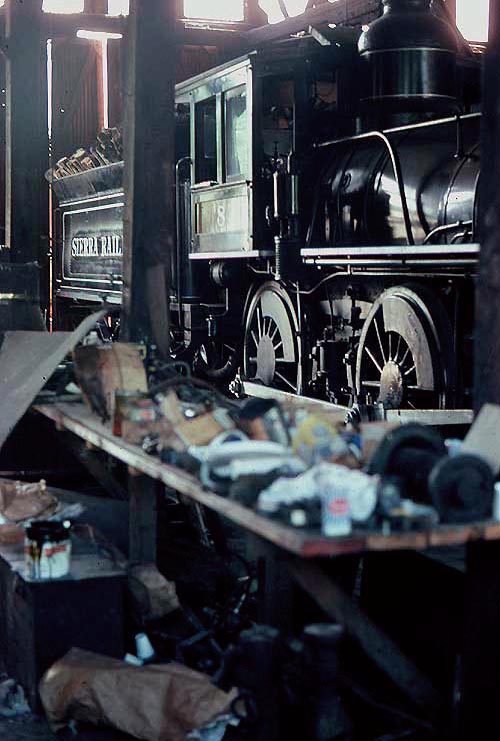
top: photographer unknown, Wx4 collection
left: Wx4 photo
